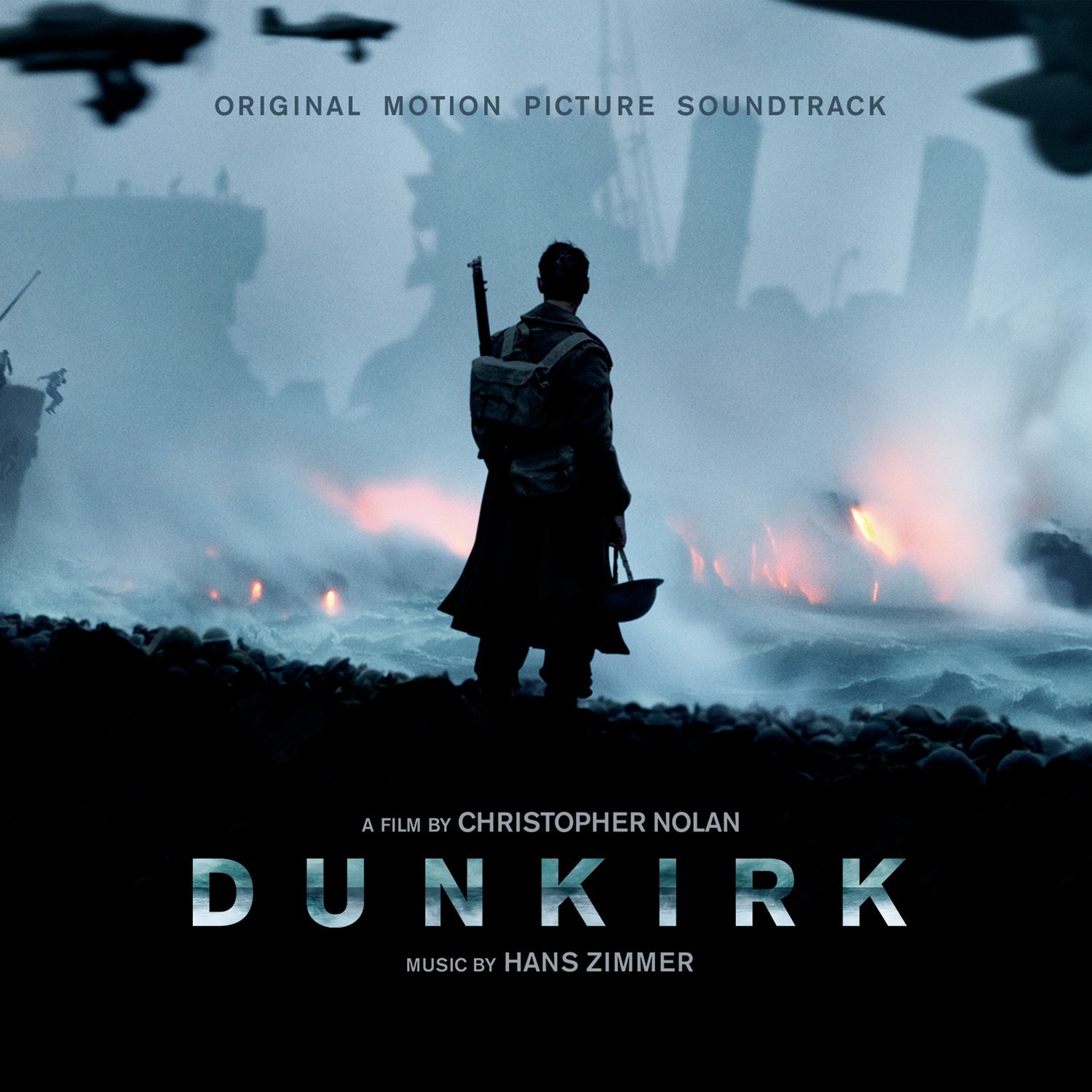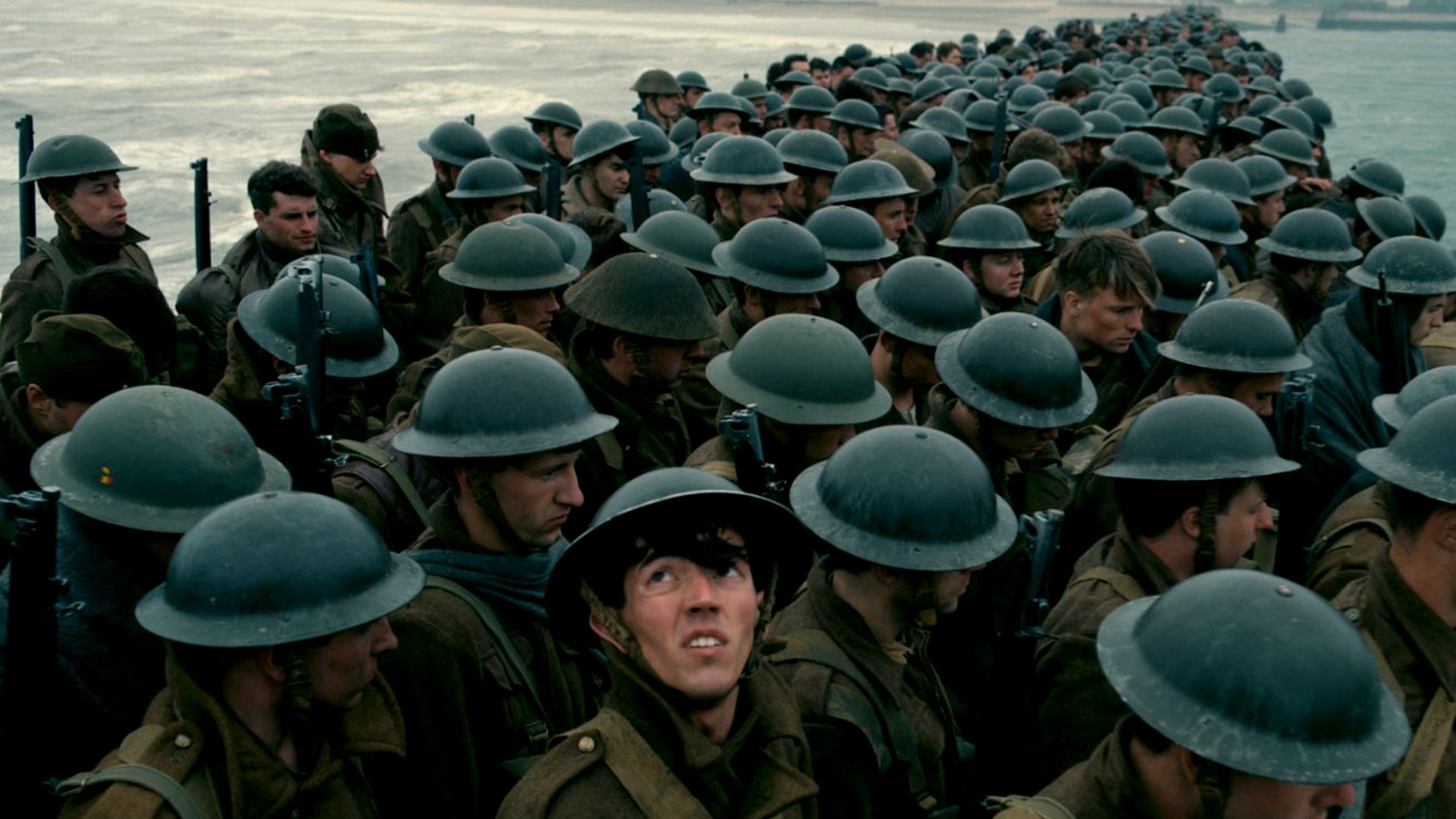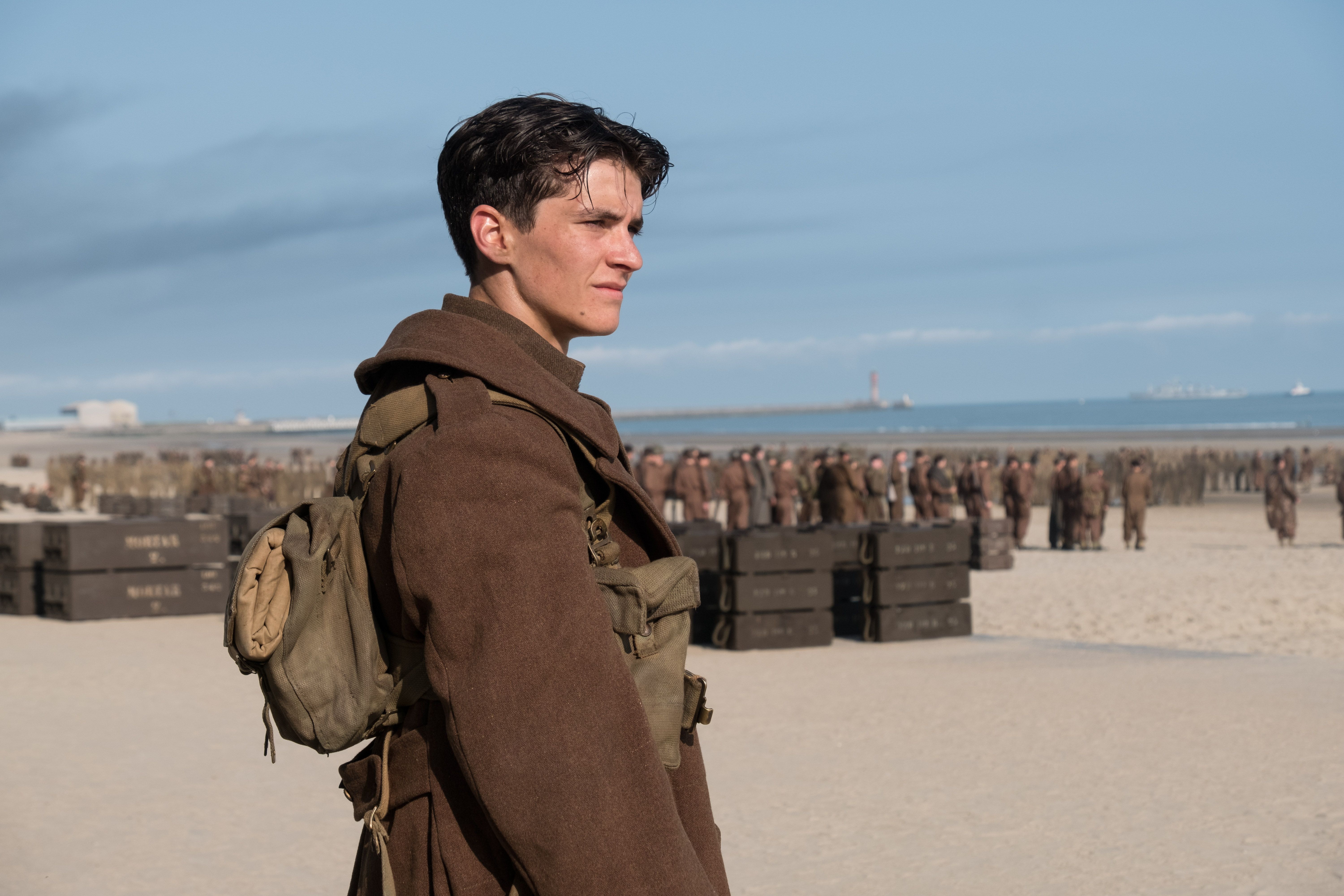Unpacking The Dunkirk Film 2017 Cast: Faces Behind The Evacuation Story
The 2017 film, Dunkirk, really made waves, didn't it? It brought to life a pivotal moment from World War II, a time when, in a way, the world held its breath. This particular movie wasn't just another war story; it was an immersive experience, pulling you right into the harrowing events of the Dunkirk evacuation. So, too it's almost, the strength of any film, especially one based on such significant history, rests a great deal on the people who bring the characters to life.
This film, actually, chose a rather unique approach to its storytelling, focusing on the sheer tension and the various perspectives of those caught in the monumental effort. It showed us the soldiers on the beach, the civilians in their small boats, and the pilots in the sky. Every single person on screen had a job to do, helping us understand the immense scale of what happened. You know, the way the actors conveyed the fear, the determination, and the sheer exhaustion was pretty powerful.
The historical backdrop for Dunkirk is, as a matter of fact, incredibly important. As the allies were losing the Battle of France on the Western Front, the Battle of Dunkirk was the defense and evacuation of British and other Allied forces to Britain from May 26 to June 4, 1940. Allied soldiers from Belgium, the British Commonwealth, and France found themselves hemmed in on the windswept beaches of Dunkirk, France. The Dunkirk evacuation, codenamed Operation Dynamo and also known as the Miracle of Dunkirk, or just Dunkirk, was the evacuation of more than 338,000 Allied soldiers during this period. During the battle, some 338,000 British Expeditionary Force (BEF) and other Allied troops were evacuated from Dunkirk to England. The battle was fought around the French port of Dunkirk (Dunkerque or Duinkerke or Duinkerken) during the Second World War, between the Allies and Nazi Germany. It involved the defense and, in a way, a daring rescue known as the miracle of deliverance. At the end of the battle, Dunkirk was left in ruins, and 235 vessels were lost, along with at least 5,000 soldiers. The Germans managed to capture 40,000 Allied soldiers, who were, basically, left behind. This historical weight really put a lot of pressure on the dunkirk film 2017 cast to get things just right.
Table of Contents
- The Historical Canvas of Dunkirk
- Why the Cast Was So Important
- Key Performers in the Dunkirk Film 2017 Cast
- The Ensemble Effect on the Screen
- Bringing History to Life Through Performance
- Questions People Often Ask
The Historical Canvas of Dunkirk
The film, you know, doesn't spend a lot of time on detailed backstories for its people. Instead, it places them squarely in the midst of the chaos and the desperate struggle for survival. This approach meant that the actors had to convey a huge amount of emotion and character through their actions and reactions, rather than through long speeches. It's a rather intense way to tell a story, making the audience feel like they are right there on the beach or in the water. For example, the sheer scale of the evacuation, with hundreds of thousands of soldiers trapped, is something the film really tries to get across, and the actors are key to showing that human element amidst the grand historical event. Learn more about the Dunkirk evacuation on our site.
Why the Cast Was So Important
The choice of actors for Dunkirk was, in some respects, quite deliberate. The director, Christopher Nolan, opted for a mix of very experienced performers and newer faces. This blend, it's almost, helped create a feeling of authenticity. The younger actors, many of whom were less well-known at the time, really captured the raw vulnerability of the soldiers. Meanwhile, the established stars provided a kind of anchor, giving weight to the more senior roles or the civilian efforts. This careful selection really helped the film achieve its unique tone and impact. It’s pretty clear that every person chosen had a specific purpose in mind for the overall narrative. Discover more about Christopher Nolan's works.
Key Performers in the Dunkirk Film 2017 Cast
Let's take a closer look at some of the individuals who formed the core of the dunkirk film 2017 cast. Their contributions were, naturally, vital to making the film as powerful as it turned out to be. Each one, in their own way, helped to paint a picture of desperation and courage.
Fionn Whitehead as Tommy
Fionn Whitehead played Tommy, one of the young soldiers on the beach. He was, arguably, the central figure through whose eyes much of the ground-level action was seen. His performance really conveyed the exhaustion and the constant, gnawing fear of being trapped. He didn't have many lines, but his expressions and actions spoke volumes. It was, in fact, a demanding role, requiring him to be present in nearly every scene of the beach sequences, showing the audience the desperate struggle to simply survive. His portrayal of a regular soldier, just trying to get home, felt very real.
Aneurin Barnard as Gibson
Aneurin Barnard took on the part of Gibson, a quiet soldier who, as it turns out, carries a secret. His character’s journey is one of silent desperation and, ultimately, a profound act of selflessness. Barnard's performance was, in a way, quite subtle, relying on his body language and the look in his eyes to communicate his character's inner turmoil. He was, basically, a symbol of the many untold stories of those who fought and sacrificed. The interaction between his character and Tommy, too, was a significant part of the early beach scenes, adding a layer of mystery and tension.
Harry Styles as Alex
Harry Styles, a well-known musician, made his acting debut as Alex. His casting certainly got a lot of attention, and he, as a matter of fact, delivered a performance that surprised many. Alex is another soldier on the beach, someone who is quick to voice his frustration and fear. Styles' portrayal added a touch of relatable humanity to the chaotic scenes. He showed the very human reactions to extreme stress, from anger to brief moments of hope. It was, quite simply, a solid performance for a first-time actor in such a big film.
Damien Bonnard as the French Soldier
Damien Bonnard played a French soldier who finds himself caught up with the British troops. His character highlights the international nature of the Allied forces and the shared struggle. Bonnard, a French actor, brought a quiet intensity to his role, communicating the sense of isolation and the language barrier without needing extensive dialogue. He was, literally, a powerful presence, showing the universal experience of a soldier trapped in a desperate situation. His scenes often emphasized the broader scope of the evacuation, not just British forces.
Tom Hardy as Farrier
Tom Hardy played Farrier, an RAF pilot. His performance was, in some respects, quite remarkable because his face is mostly obscured by an oxygen mask and goggles for nearly the entire film. Yet, he managed to convey so much through his eyes and his actions in the cockpit. He was, basically, the embodiment of the air support, fighting against overwhelming odds to protect the soldiers below. His segments in the film were, naturally, very tense, showcasing the aerial battles and the pilots' bravery. It’s pretty amazing how much he could communicate with so little visible expression.
Mark Rylance as Mr. Dawson
Mark Rylance portrayed Mr. Dawson, a civilian boat owner who volunteers to cross the Channel to help. His character represents the spirit of the "little ships" and the civilian effort. Rylance's performance was, in a way, calm and resolute, a steady presence amidst the turmoil. He showed a quiet determination and a deep sense of duty. He was, actually, a comforting figure for the soldiers he rescued, providing a glimpse of hope and safety. His scenes, with his son and a young friend, really grounded the film in the human cost and the civilian response.
Kenneth Branagh as Commander Bolton
Kenneth Branagh played Commander Bolton, a naval officer overseeing the evacuation from the mole. His character embodies the strategic and leadership aspects of the operation. Branagh's performance was, in fact, one of quiet authority and deep concern for the troops. He showed the immense pressure on those making the difficult decisions during the crisis. He was, therefore, a crucial figure in conveying the scale of the evacuation and the desperate attempts to organize it. His presence on the mole felt very real, conveying the gravity of the situation.
Cillian Murphy as the Shivering Soldier
Cillian Murphy played a soldier rescued by Mr. Dawson's boat, who is deeply traumatized by his experiences. His character provides a stark look at the psychological toll of war. Murphy's performance was, in a way, raw and unsettling, showing the profound impact of combat stress. He was, literally, a powerful reminder that the battle continued in the minds of those who survived. His scenes highlighted the hidden wounds of war, and his interactions with the civilians on the boat were, obviously, quite impactful.
Lee Armstrong and Other Supporting Roles
While the focus often goes to the more prominent names, the dunkirk film 2017 cast included many other actors who, too it's almost, contributed significantly. Lee Armstrong, for instance, played a role, as did many others who brought the sheer numbers of soldiers and civilians to life. These supporting performers, though they might have had fewer lines or less screen time, were, in some respects, essential to creating the sprawling, chaotic atmosphere of the evacuation. Every face in the crowd, every soldier on the beach, added to the authenticity and the feeling of being overwhelmed by the situation. They were, basically, the silent heroes of the film, filling out the vast canvas of the story.
The Ensemble Effect on the Screen
What truly made the dunkirk film 2017 cast stand out was, in fact, how they worked together as a group. There wasn't one single "star" who carried the entire film; instead, it was a collective effort. Each actor, whether a seasoned veteran or a newcomer, played their part in building the tension and the emotional resonance of the story. This ensemble approach meant that the audience was, naturally, drawn into the larger narrative of the evacuation itself, rather than focusing on individual heroics. It really felt like a massive group of people, all just trying to get through a terrible ordeal. This sense of shared experience was, arguably, one of the film's greatest strengths.
Bringing History to Life Through Performance
The actors in Dunkirk had the challenging task of portraying real human experiences during a historical event of immense scale. They didn't just play characters; they embodied the fear, the hope, and the sheer grit of those who were there. Their performances, without extensive dialogue, had to convey the weight of the situation. This was, basically, achieved through their expressions, their movements, and their reactions to the unfolding chaos. For example, the way they showed the exhaustion of constant waiting, or the sudden bursts of terror during an attack, made the history feel incredibly immediate and personal. The film, in some respects, is a testament to how acting can make history feel alive and urgent. It really showed the human side of a very big, very important event. You can learn more about the historical context of the Dunkirk evacuation at The National Archives.
Questions People Often Ask
Who played the main soldier in Dunkirk?
Fionn Whitehead played Tommy, who was, in a way, the central young soldier character on the beach, through whose eyes we experience much of the ground-level action. He was, basically, a very important part of the story, showing the audience the perspective of a common soldier trying to survive.
Was Harry Styles in Dunkirk?
Yes, Harry Styles was, in fact, in Dunkirk. He played the role of Alex, another soldier on the beach. It was, as a matter of fact, his acting debut, and his performance received a good deal of attention. He showed, pretty clearly, the fear and frustration of a soldier caught in the evacuation.
Is Dunkirk a true story?
Yes, the film Dunkirk is, in essence, based on the true historical events of the Dunkirk evacuation during World War II. While the specific characters and their individual stories are, in some respects, fictionalized for the film, the overall event, the timeline, and the circumstances of the evacuation of Allied soldiers from the beaches of Dunkirk in May-June 1940 are, naturally, historically accurate. It's a very real piece of history brought to the screen.

Movie Review: Dunkirk - The Utah Statesman

Dunkirk (2017) Movie Reviews | Popzara Press

Dunkirk: 30-Minute Behind the Scenes Video Reveals Nolan's Thriller